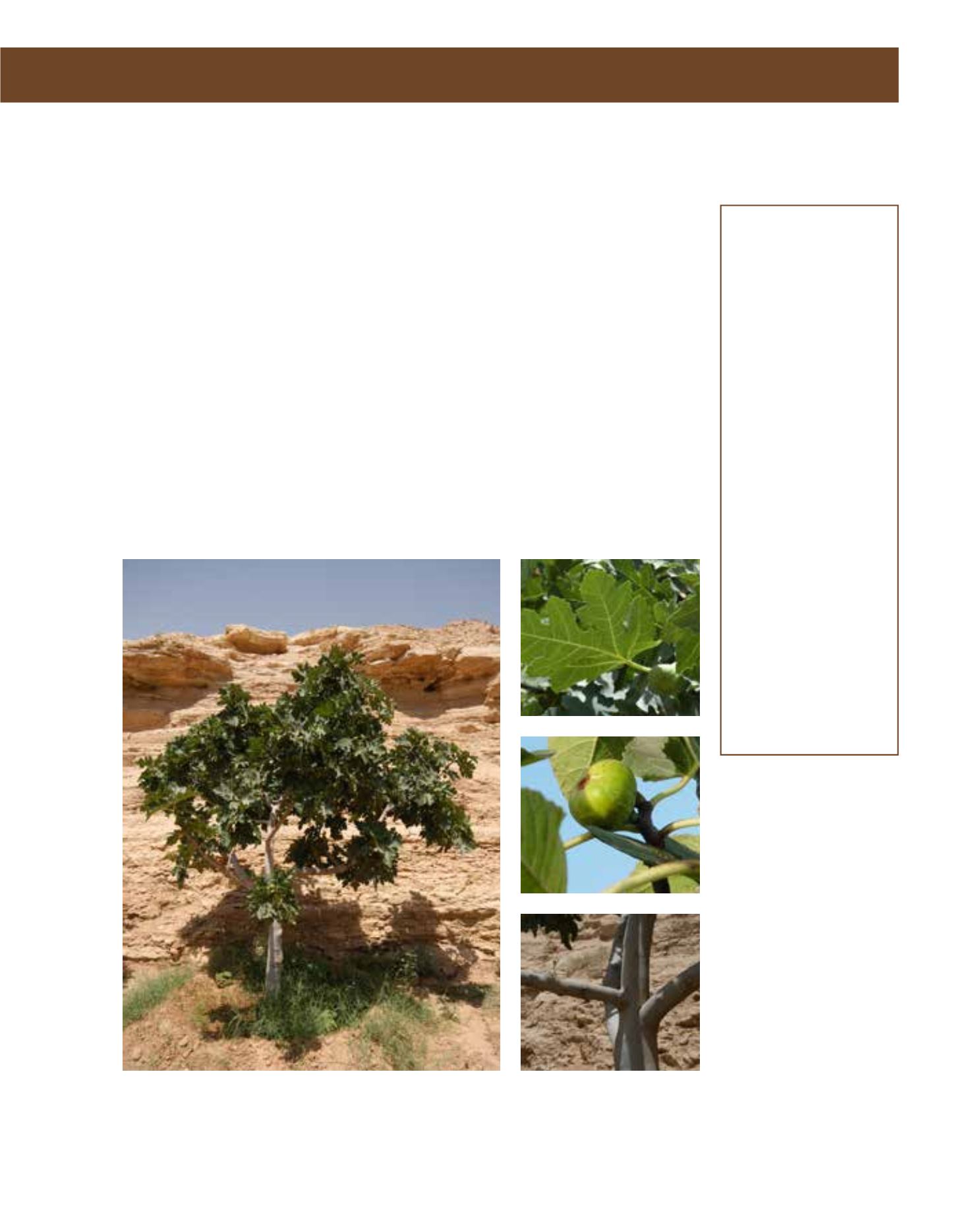

GENERAL
Origin
:
sub-Mediterranean,
Mediterranean,
sub-tropical
Humidity
:
semi-arid, semi-
humid
Propagation :
cuttings, aerial
layering
Maintenance :
moderate
CONDITIONS
Urban climate :
resistant
Dessication :
vulnerable
Stagnant water :
vulnerable
Irrigation
:
medium
Salinity/ppm :
moderate (2000
ppm)
Hardiness
:
-12°C
SHAPE
Type
:
tree, shrub
Height
:
9 m-15 m
Spread
:
3 m-12 m
Foliage
:
deciduous
FLOWER
Colour
:
green
Size
:
0.5 cm
Period
:
May - June
FRUIT
Type of fruit :
drupe(fleshy/
juicy)
Fruit size
:
8 cm - 7 cm
Toxicity
:
produced for
food, fruit
The common Fig, or teen in Arabic, is a small, deciduous tree, native to the Mediterranean and
often seen in Arriyadh growing on farms, in gardens and as escapees from cultivation. A fairly
fast-growing tree, up to 9 metres high with a 3-metre spread, it has a short, heavy trunk with
smooth, silvery bark and spreading branches. The leaves are large and rough-textured with three
to five lobes. Depending on the variety, of which there are many, the sweet, pear-shaped, edible
fruits can be yellow, green, purple or black in colour when ripe. Plants require protection from
the wind, full sun to partial shade, and will endure long dry periods, but for fruiting and general
appearance, deep watering every month during the summer, with less water in winter, is neces-
sary. They grow well in poor soils, but need good drainage and are not very tolerant of salty or
alkaline soils. Generally frost-tolerant, a tree will often lose its leaves in winter. However, a hard
freeze can result in dieback of the branches. Propagation is by cuttings, air-layering and root
suckering. Apart from its use as a cultivated fruit tree, F. carica is a tree with bold foliage and an
irregular trunk, which also has ornamental value for a garden. It makes a good background plant
or screen in a park and is attractive in its leafless state, because of the picturesque character of
its branches. It is also suitable for training on a wall and for planting in containers. Pruning is
required to maintain the canopy and improve fruit production.
146
Ficus carica,
Moraceae
Common Fig,
teen
















